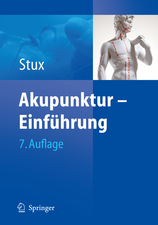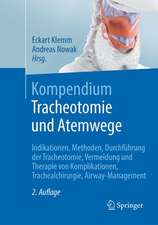Basics of Acupuncture
Autor Gabriel Stuxen Limba Engleză Paperback – 5 mai 2012
Preț: 365.10 lei
Preț vechi: 384.31 lei
-5% Nou
Puncte Express: 548
Preț estimativ în valută:
69.86€ • 72.94$ • 57.82£
69.86€ • 72.94$ • 57.82£
Carte tipărită la comandă
Livrare economică 05-19 aprilie
Preluare comenzi: 021 569.72.76
Specificații
ISBN-13: 9783642491139
ISBN-10: 3642491138
Pagini: 328
Ilustrații: XIV, 314 p. 70 illus.
Dimensiuni: 127 x 203 x 17 mm
Greutate: 0.33 kg
Ediția:1995
Editura: Springer Berlin, Heidelberg
Colecția Springer
Locul publicării:Berlin, Heidelberg, Germany
ISBN-10: 3642491138
Pagini: 328
Ilustrații: XIV, 314 p. 70 illus.
Dimensiuni: 127 x 203 x 17 mm
Greutate: 0.33 kg
Ediția:1995
Editura: Springer Berlin, Heidelberg
Colecția Springer
Locul publicării:Berlin, Heidelberg, Germany
Public țintă
Professional/practitionerCuprins
1 Introduction.- Growth of Clinical Acupuncture in the West.- 2 Scientific Basis of Acupuncture.- 2.1 Acupuncture Analgesia (Basic Research).- 2.2 Acupuncture Analgesia for Chronic Pain.- 2.3 Drug Addiction.- 2.4 Nerve Regeneration, Cardiovascular, Antiemetic.- and Urogenital Effects of Acupuncture.- 2.5 Acupuncture Points (Do They Really Exist?).- 3 Background and Theory of Traditional Chinese Medicine.- 3.1 Tao, Yin, and Yang.- 3.2 The Vital Energy, Life Force: Qi.- 3.3 Pathogenesis of Chinese Medicine.- 3.4 The System of Five Phases.- 3.5 Diagnosis in Traditional Chinese Medicine.- 4 Channels, Organs, and Points.- 4.1 System of Channels and Organs.- 4.2 Point Categories.- 4.3 Methods of Point Location.- 4.4 Description of Channels and Points.- 5 Technique of Acupuncture.- 5.1 Acupuncture Needles.- 5.2 De Qi Sensation.- 5.3 Tonifying and Sedating Methods of Stimulation.- 5.4 Sterilization of the Needles.- 5.5 Complications of Acupuncture Treatment.- 5.6 Moxibustion.- 5.7 Acupressure.- 5.8 Laser Acupuncture.- 6 Acupuncture Treatment.- 6.1 Principles of Acupuncture and Rules of Point Selection.- 6.2 Locomotor Disorders.- 6.3 Respiratory Disorders.- 6.4 Cardiovascular Disorders.- 6.5 Gastroenterological Disorders.- 6.6 Mental Disturbances and Illnesses.- 6.7 Neurological Disorders.- 6.8 Gynecological Disorders.- 6.9 Urological Disorders.- 6.10 Skin Disorders.- 6.11 Disorders of the Sense Organs.- 6.12 Acute Disorders and Emergencies.- 7 Electroacupuncture and Transcutaneous Electrical Nerve Stimulation.- 7.1 Electroacupuncture.- 7.2 Transcutaneous Electrical Nerve Stimulation, TENS.- 7.3 Acupuncture-like TENS Differs from Conventional TENS.- 7.4 Habituation to Monotonous Stimuli.- 8 Traditional Chinese Syndromes: The Diagnosis of Chinese Medicine.- 8.1 Major Patterns ofDisturbances.- 8.2 Syndromes of the Five Zang Organs.- 8.3 The Most Frequent Syndromes.- 9 Additional Methods of Treatment (G. Stux).- 9.1 Chakra Acupuncture.- 9.2 Awareness Release Technique.- Appendixes A-D.- A. World Health Organization.- List of Indications for Acupuncture.- B. Nomenclature and Abbreviations for Channels and Points.- C. Glossary of Chinese Terms.- D. Alphabetic List of Chinese Point Names.
Textul de pe ultima copertă
The most important acupuncture points are clearly depicted topographically on posters. We chose not to use photographs of the body surface because the structures which are directly under the skin cannot be portrayed. To ensure a clear and yet exact representation the bones have been drawn in the background. The graphic representation of the meridians and points are an indispensable aid to every acupuncturist, and the various categories of acupuncture points are presented in tables on the selector, enabling the user to recognize the most important points of a meridian at a glance.



















